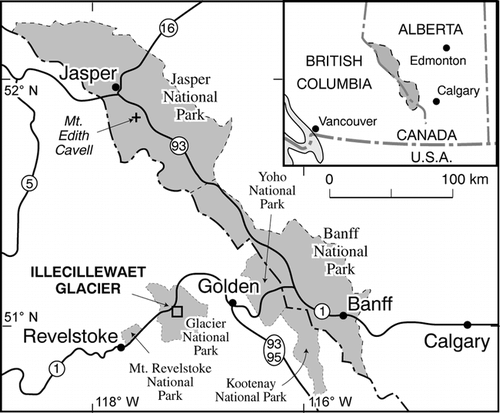Figures & data
FIGURE 2. Sketch maps of the Illecillewaet Glacier forefield. Dated ice-front positions and historical details are based on maps and photographs by the Vaux family (CitationVaux and Vaux, 1907 and photo NG4-894—Archives of the Canadian Rockies, Banff). Dashed lines show ridges that are hidden from view by dense shrub cover or have been removed by erosion since the late 1880s. Morainic ridge segments have been correlated based on their size and position (A). The germination dates of the oldest trees on each ridge segment are also shown (B)
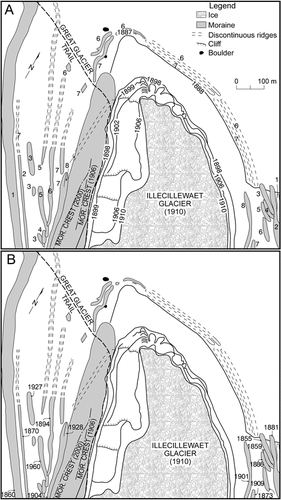
FIGURE 3. Scatterplot showing the control points and growth curve developed in this study. Open circles show the age of each control-point surface and the maximum diameter of the largest Rhizocarpon agg. thallus on each surface. Error bars show the adjustments made for tree ecesis. Dating controls are summarized in
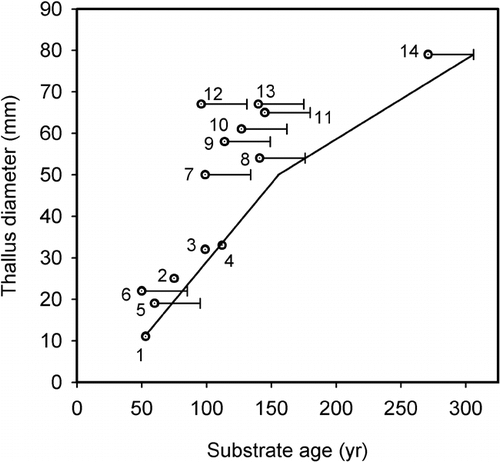
FIGURE 4. Comparison of the lichen growth curve developed in this study (solid line) and a growth curve developed on similar substrates at Mount Edith Cavell (CitationLuckman, 1977). Open circles (this study) and triangles (CitationLuckman, 1977) show the age of each control point surface and the maximum diameter of the largest Rhizocarpon agg. thallus on each surface. Error bars show the adjustments made for tree ecesis. Dating controls are summarized in and in CitationLuckman (1977)
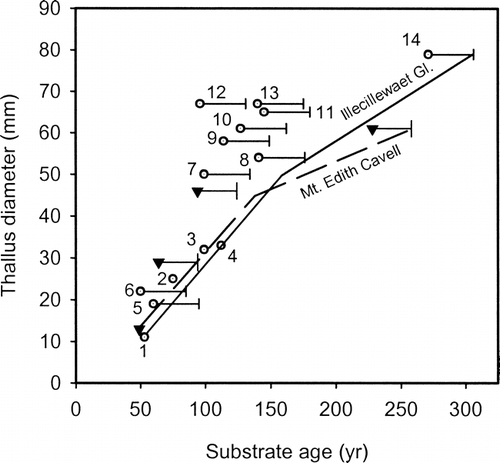
FIGURE 5. Graph of air temperature (A) and relative humidity (B) collected in 1996. The data summarize hourly readings by sensors that were placed on a rock in the middle of the study site. The humidity record is incomplete owing to sensor failure linked to the melting of a 2–3-m-deep snowpack
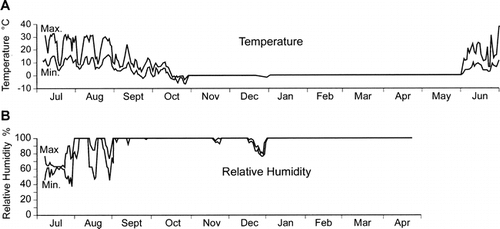
FIGURE 6. Photograph of a Rhizocarpon lecanorinum thallus with fixed points. This photo shows the thallus in July 2000. A white line has been drawn on the image to mark the approximate edge of the thallus in July 1996. Since radial growth tends to be uneven, measurements were often made to five or more fixed points at each thallus. The circles and arrows drawn on this image highlight two of the small bulges (“lobes”) where growth was measured on this thallus. The scale bar measures 10 mm
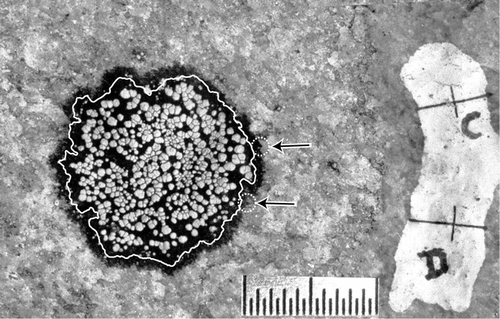
FIGURE 7. Scatterplots (A, B, C, D) summarize the annual radial growth rate measured in 105 thalli. Each dot represents the mean growth rate in a 5-mm size class. The dotted line in each graph represents the mean growth rate measured in that year. The histogram (E) shows the number of thalli measured in each 5-mm size class
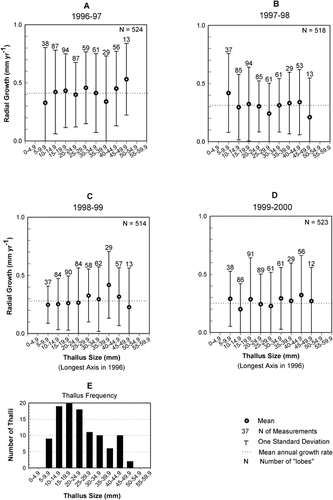
FIGURE 8. Scatterplot showing linear regression of thallus size against mean radial growth rates for each thallus size class in all years. Weak correlation coefficients and linear regression lines with a positive slope (years 1996–1997, 1997–1998, and 1998–1999) hint that radial growth may increase slightly as thallus size increases
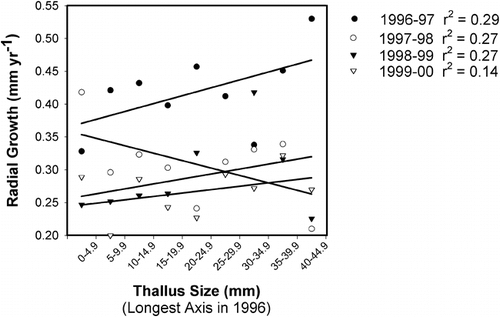
FIGURE 9. Scatterplots comparing ages estimated by the Illecillewaet growth curve (A) and the means of directly measured radial growth rates (B). Dotted lines represent thallus size–substrate age relationships of 20-, 40-, 60-, and 70-mm thalli. Comparison of the two approaches shows that in the first two centuries of growth (up to ca. 60-mm thallus diameter), ages estimated using the 4-yr mean growth rate (1996–2000) are 10 yr younger than those estimated by the indirectly calibrated growth curve (graph A). Larger underestimates of age are predicted for surfaces >200 yr old and thalli >60 mm diameter
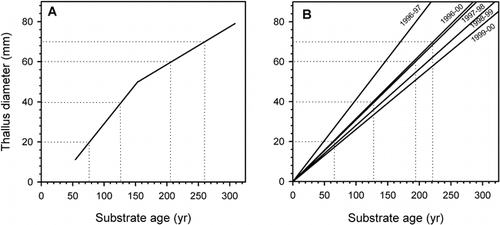
TABLE 1 Tree ecesis data from the Illecilewaet Glacier forefield
TABLE 2 Summary tree-age and lichen-size data for the Illecillewaet Glacier forefield. Thalli first measured in 2000 are indicated by *. All other thalli were measured in 1996
TABLE 3 Historical and dendrochronologic dating controls and Rhizocarpon agg, size (control points) from the Illecillewaet Glacier forefield. Unless otherwise noted, photographs are referred to by call numbers assigned by the Archives of the Canadian Rockies, Banff, Alberta
TABLE 4 Estimated maximum error (error in reproducibility). Measurements were taken on different days from 70 randomly chosen points to estimate the reproducibility of the data. The differences between the two measurements are reported here as the error in reproducibility
TABLE 5 Summary statistics for the annual radial growth rate measurements
